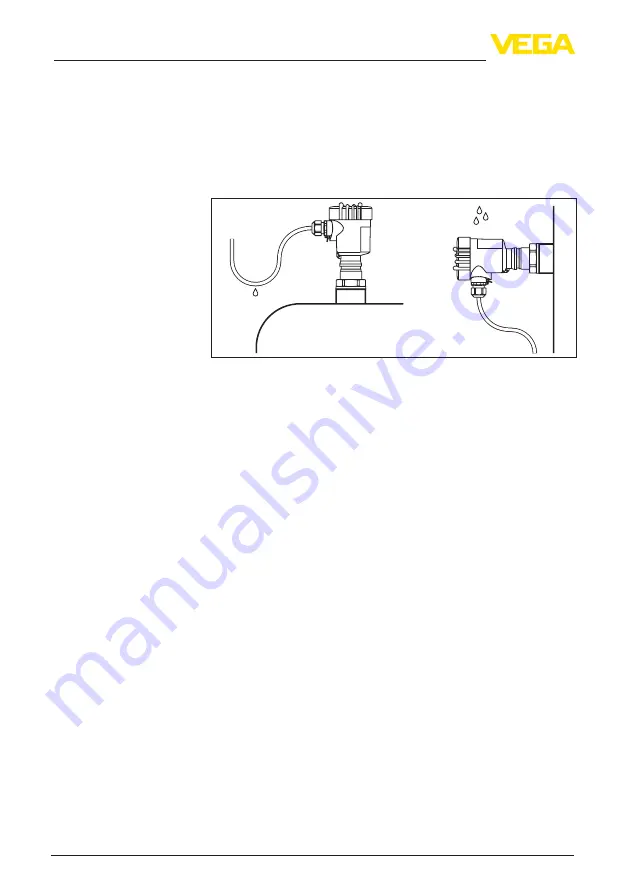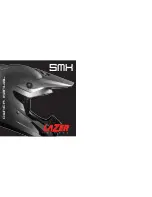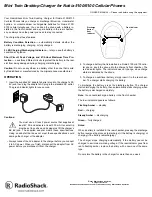
14
4 Mounting
VEGACAL 64 • Two-wire 4 … 20 mA/HART
30030-EN-200929
You can give your instrument additional protection against moisture
penetration by leading the connection cable downward in front of the
cable gland. Rain and condensation water can thus drain off. This
applies mainly to outdoor mounting as well as installation in areas
where high humidity is expected (e.g. through cleaning processes) or
on cooled or heated vessels.
To maintain the housing protection, make sure that the housing lid is
closed during operation and locked, if necessary.
Fig. 5: Measures against moisture ingress
The process fitting must be sealed if there is gauge or low pressure
in the vessel. Before use, check if the sealing material is resistant
against the measured product and the process temperature.
The max. permissible pressure is specified in chapter "
Technical
data
" or on the type label of the sensor.
Insulating measures, such as e.g. covering the thread with teflon tape,
can interrupt the necessary electrical connection with metal vessels.
For this reason, ground the probe on the vessel or use a conductive
seal material.
Metal vessel
Make sure that the mechanical connection of the probe to the vessel
is electrically conductive to ensure sufficient grounding.
Use conductive seals, such as those made of copper or lead, etc.
Insulating measures, such as covering the thread with Teflon tape,
can interrupt the necessary electrical connection with metal vessels.
For this reason, ground the probe on the vessel or use a conductive
seal material.
Non-conductive vessels
In non-conductive vessels, e.g. plastic tanks, the second pole of the
capacitor must be provided separately.
If possible, the capacitive probe should be mounted vertically or par-
allel to the counter electrode. This applies particularly to applications
in non-conductive products.
In cylindrical tanks, spherical tanks or other asymmetrical tank forms,
nonlinear level values are generated due to the varying distance to
the vessel wall.
Pressure/Vacuum
Vessel material
Vessel shapes















































